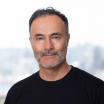Where does the Kia Tasman go from here?
With the launch dust settling and the core Pick-Up and workhorse Cab Chassis models beginning their titanic task of taking on the Ford Ranger, Toyota HiLux, Isuzu D-Max and BYD Shark 6, attention is now turning to future model developments.
As demonstrated by the astonishing success of the Shark 6 PHEV (plug-in hybrid electric vehicle), in a market that is already willing to pivot to electrified powertrains, is having an albeit-capable diesel engine as the sole choice enough to run with the best-sellers?
Or, should the Tasman follow the lead of the Ranger Raptor and Nissan Navara Warrior by going down the off-road performance path, complete with brawnier body makeovers and beefier underpinnings, to create a halo model for the rest of the range to bask beneath?
The answers may shock you, with Kia Australia (KAU) Product Planning Manager, Roland Rivero, revealing that offering an alternative to the Shark 6 and Ranger PHEV is imperative, given Australia’s stringent New Vehicle Efficiency Standard (NVES).
“With NVES currently in play, the priority would probably be more of an electrified hybrid, for example, to try and see us through to the longer term,” he told CarsGuide.
So, I'll probably put a hybrid up first before I look at a Raptor or a (Toyota HiLux) GR equivalent.”
Considering that Kia has already displayed an off-road focused Tasman concept known as the WKNDR (Weekender) earlier this year, that response is surprising, particularly in a market seemingly preoccupied with tentpole flagship propositions like the aptly-named Raptor.
Surprising, that is, until you realise that, in under 12 months, the Shark 6 is already in the number four position for 4x4 ute volume, at 11,657 units to the end of July, and closing in on the D-Max (sitting at 12,774 registrations).
In fact, we understand Kia is now doubling down on Tasman hybrid development, as the company seeks to avoid increasingly heavy penalties under NVES requirements in the near future.
.jpg)
That's also the reason why Australia misses out on the 2.5-litre four-pot turbo-petrol powered option, as offered elsewhere.
Expected within the next three years, the hybrid system is reportedly based on the Hyundai Motor Group’s new series-parallel petrol-electric powertrain, dubbed TMED-II (for Transmission-Mounted Electric Drive).
Making its debut in the redesigned-for-2026 Hyundai Palisade due in Australia soon, TMED-II is for transverse engine-mounted front-wheel-drive models only at this stage, with dual electric motors powering the rear axle for four-wheel drive in the top-line versions.
.jpg)
But while this means that major and very costly modifications would be required for the Tasman’s longitudinal/rear-wheel-drive (RWD) configuration, luckily for the ute, a number of coming RWD-based Genesis models with TMED-II tech are reportedly under development.
To give some indication of what could be in store for the Tasman hybrid, in the 2026 Palisade version, the system mates a 190kW 2.5-litre four-cylinder turbo petrol engine, two electric motors incorporated into a six-speed automatic transmission and a 1.65kW battery, for combined outputs of 235kW of power and 460Nm of torque.
That the ute’s box-fresh body-on-frame platform, by the way, was expressly future-proofed to take electric motors and battery packs shows the foresight of its product planners and engineers when development started in around 2019.
.jpg)
So, when will the Tasman hybrid appear in Australia?
Hard to say, as the ute needs to learn how to walk before it can run, according to Rivero.
“Getting Tasman as a ute right, first, is obviously our priority,” he said.
.jpg)
“Having that platform all ready, that all-new ladder frame platform obviously creates further opportunities down the track, should the market response request it.”
KAU CEO Damien Meredith clarified the Tasman diesel must pay its way and prove itself before the next development phase occurs – be it a hybrid, Raptor-style WKNDR or even an all-electric version.
“Let's get the foundation right, and then let's see what happens, see what we can get,” he added.
“The more success we have, the more we can ask to see what else can come.”





.jpg)

.jpg)


_0.jpg)
 (1).jpg)

.jpg)
.jpg)

.jpg)
.jpg)
_0.jpg)


.jpg)
.jpg)
.jpg)
.jpg)
.jpg)
.jpg)

.jpg)


.jpg)
